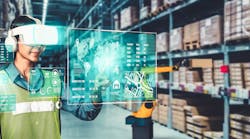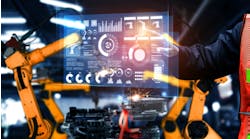By Brandon Black, senior VP and GM of Ivanti Wavelink
Inflation and budget issues are expected to rise to the #2 spot on the list of most pressing concerns, after sitting at #4 currently.
In short, fewer people are expected to do more work with fewer resources. That’s a recipe for disaster. And when the supply chain faces issues, it has a significant ripple effect on other industries. We’ve all witnessed that ripple effect, and it’s not pretty.
What’s the solution?
I’ve had the privilege of working in the industry for more than 30 years, and I’m confident that this isn’t a hopeless situation. Far from it. Why? One word, and it’s sure to be met with mixed feelings: technology.
I’m not talking about replacing your warehouse team with R2-D2 and C3PO. Believe me, I’m well aware of the sensitivities around adopting technology in the warehouse industry, and I care deeply about the human element here. In fact, the human element is exactly why technology is so important. We’re moving into an era where the right technology can be leveraged to make warehouse jobs easier, more efficient, more productive, and with far less physical burden.
I’m talking about multimodal productivity. In this model, technology is used to enhance the worker experience. Warehouse workers use mobile technology to input requests, and robots physically do the picking and carrying. Warehouse workers still strategize, command, and verify everything, but they can do the work in less time (and with fewer injuries). This frees them up to work on more nuanced tasks that only human minds can do. It also opens up the warehouse industry to a whole new section of the workforce for whom traditional warehouse roles would have included prohibitive physical demands.
Our survey revealed that there’s some traction already happening with technology adoption. Most respondents plan to invest in new technology in coming next year, or to build on existing technology. But some plan no updates, and others are merely dipping their toes in.
Why multimodal productivity matters
I understand the concerns, but the reality is multimodal productivity isn’t just the future of the work landscape; it’s the NOW. And shrewd businesses will quickly get on board. Multimodal productivity enables increased productivity while changing workers’ daily activities for the better by using the smartest resources—human or technology—for each stage of a workflow. Additionally, the shift from constant physical demands to more strategic workflows opens up new talent pools, which is much needed to address the worker shortage.
Smart companies maximize multimodal productivity by investing in technology that is easy to deploy, streamlined, intuitive to manage, and gives full visibility into all assets. It’s what is going to make the difference between the conversation at the outset of this piece, and an operation that truly does do more with less—without burdening workers.


